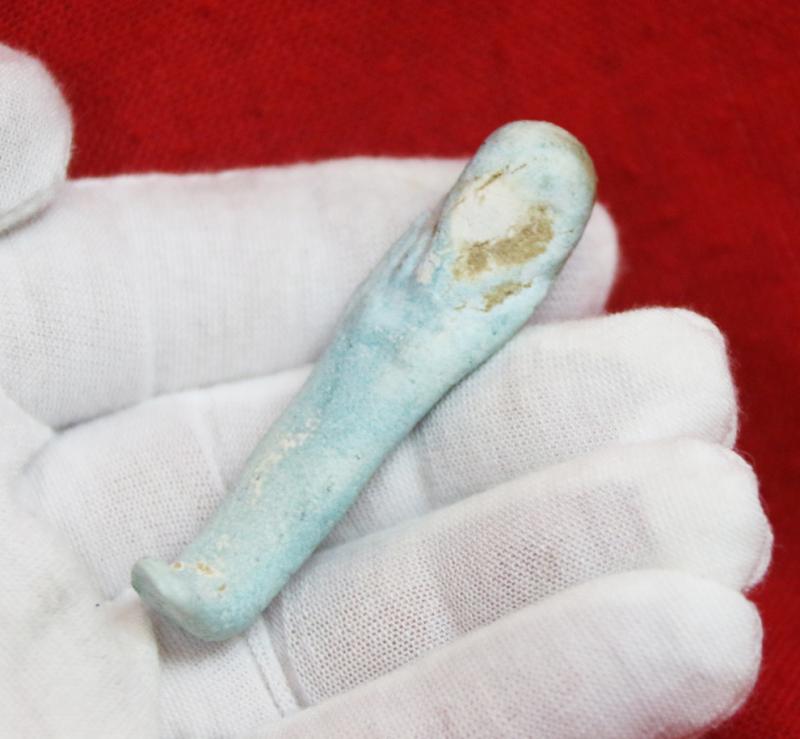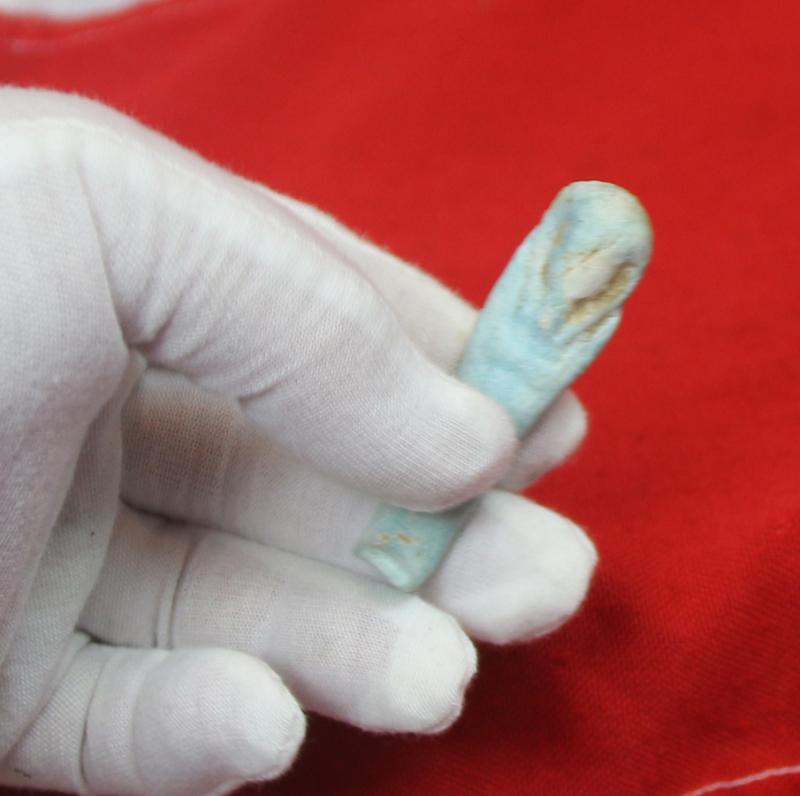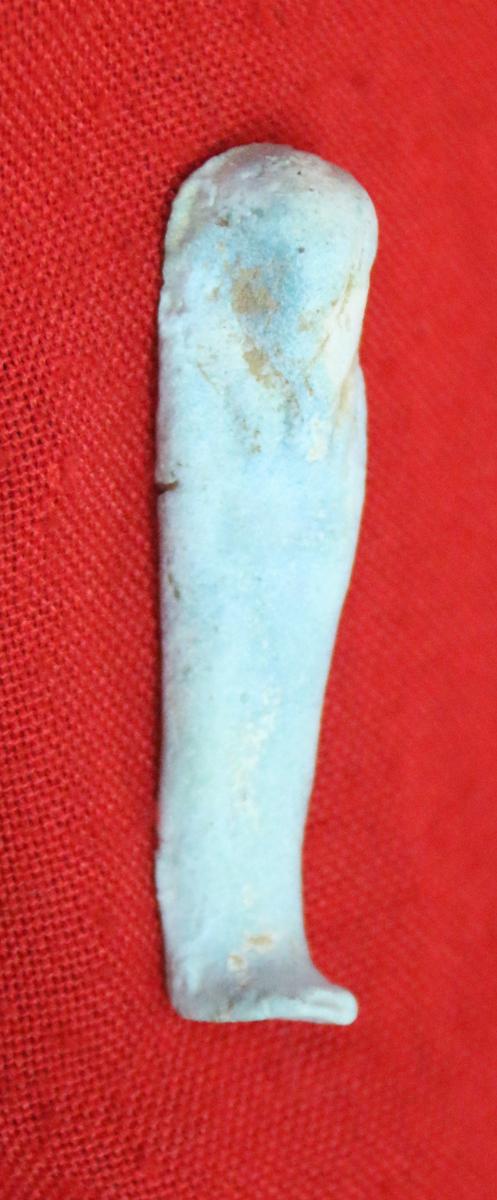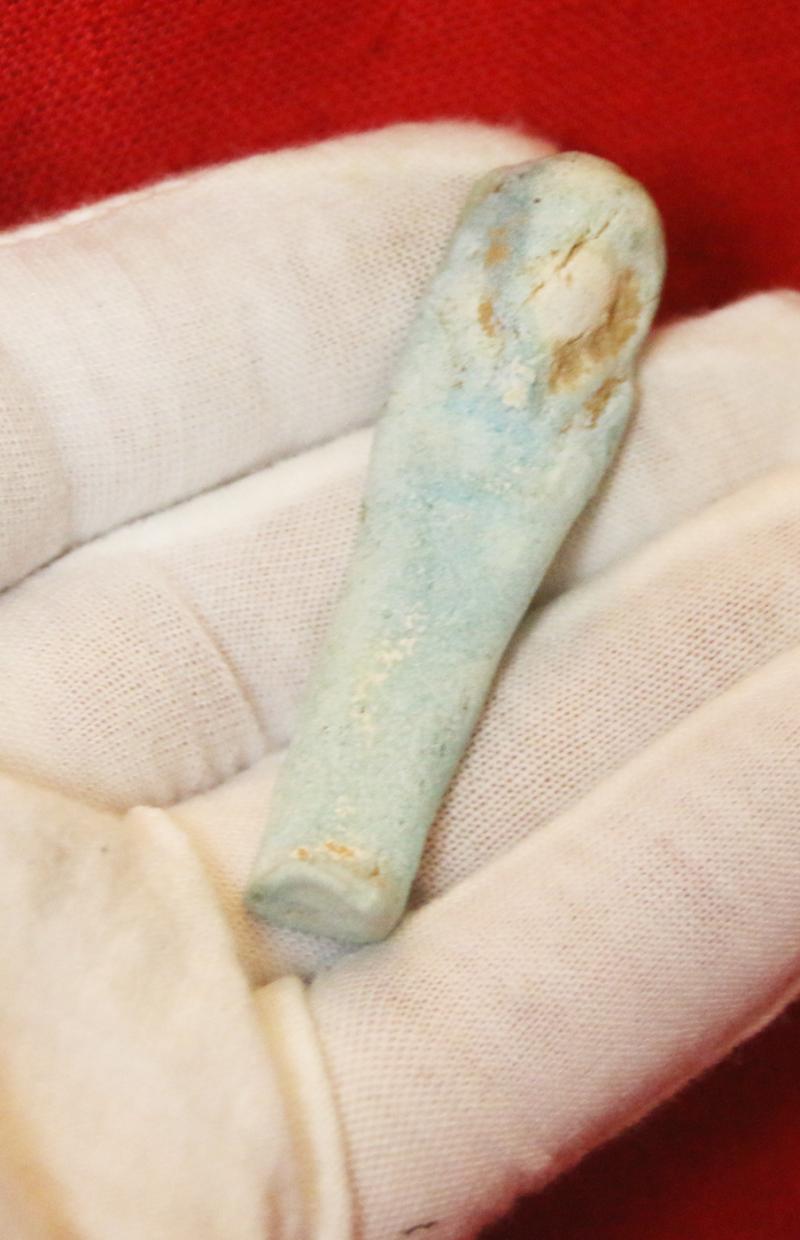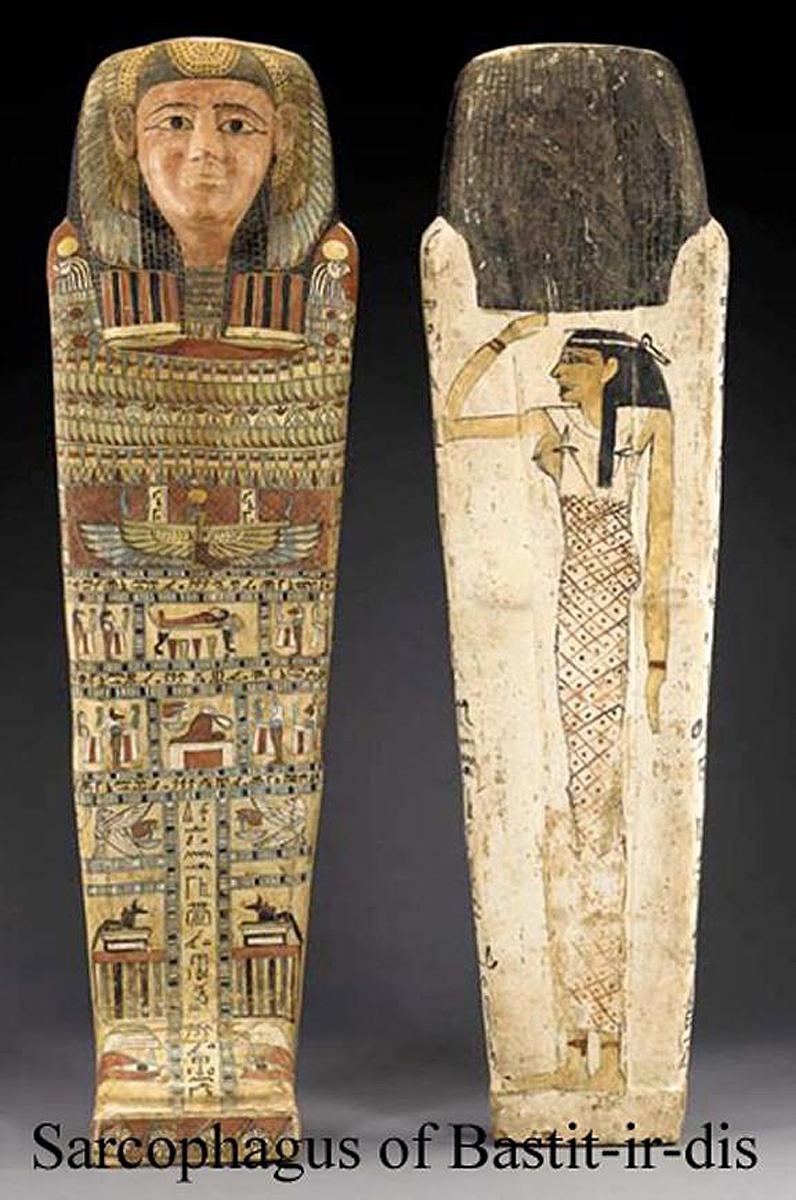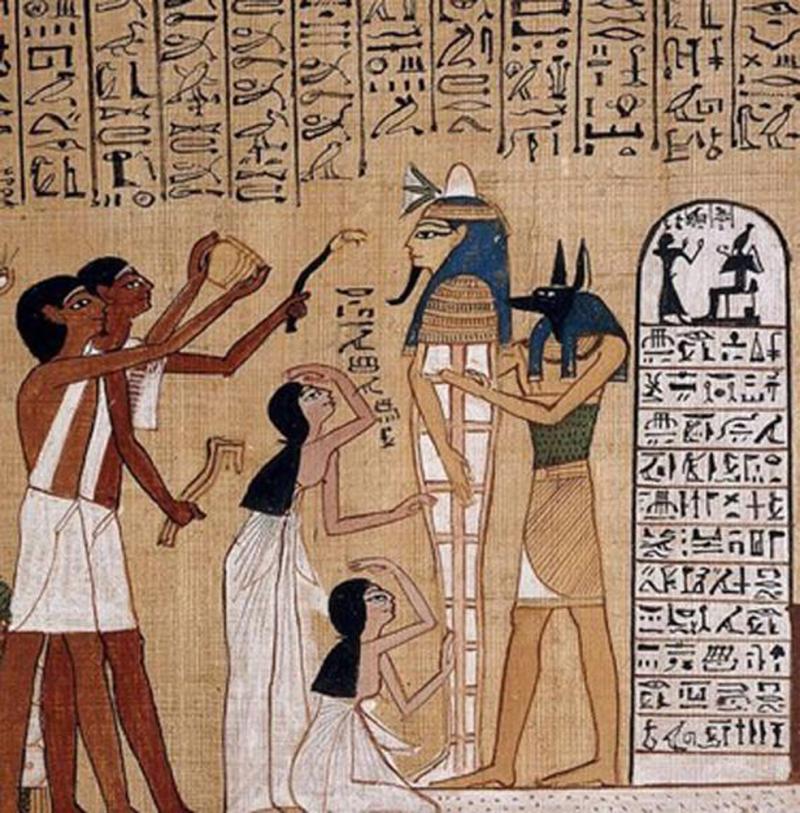An Original Ancient Egyptian Shabti, The Afterlife Servant of The Mummy, Partial Blue-Glazed Faience 664 to 332 BC
A stunning Grand Tour artefact.
Much of our Grand Tour historic artefacts were originally acquired by a noble Scottish family in the 1820's while on a Grand Tour of the Middle East and the Holy Land, plus Anglo French battle sites within Northern & Western France from Azincourt, in the Pas-de-Calais, to Poitiers in Aquitaine. And the great classical battle sites of Ancient Rome and Greece.
The Scottish 10th Duke of Hamilton, the world renown Grand Tour collector, especially of ancient Egyptian pieces. He was the Ambassador to Catherine the Great as well as being Lord High Steward to both King William IV and Queen Victoria. He was so enamoured with his devotion to his collection of antiquities, he was mummified after his death, and buried in an ancient Egyptian sarcophagus within his family tomb.
From the 25th dynasty to the Late Period. One of a group of fine small tomb pieces we acquired. A shabti (also known as shawabti or ushabti) is a generally mummiform small figurine found in many ancient Egyptian tombs. They are commonly made of blue or green glazed Egyptian faience, but can also consist of stone, wood, clay, metal, and glass. The meaning of the Egyptian term is still debated, however one possible translation is ‘answerer’, as they were believed to answer their master’s call to work in the afterlife. Since the Fourth Dynasty (2613–2494 BC), for instance, the deceased were buried with servant statuettes like bakers and butchers, providing their owners with eternal sustenance. after the death of Cleopatra in around 37 b.c. and the close of the Ptolomeic Dynasty, no shabti were produced for service in Egyptian mummy's tombs. A spell was oft written on the shabti so that it would awaken as planned, this is the 'shabti spell' from chapter six of the Book of the Dead and reads as follows:
"O shawabti, if name of deceased is called upon,
If he is appointed to do any work which is done on the necropolis,
Even as the man is bounden, namely to cultivate the fields,
To flood the river-banks or to carry the sand of the East to the West,
And back again, then 'Here am I!' you shall say"
Piye established the Twenty-fifth Dynasty and appointed the defeated rulers as his provincial governors. He was succeeded first by his brother, Shabaka, and then by his two sons Shebitku and Taharqa. The reunited Nile valley empire of the 25th Dynasty was as large as it had been since the New Kingdom. Pharaohs of the dynasty, among them Taharqa, built or restored temples and monuments throughout the Nile valley, including at Memphis, Karnak, Kawa, and Jebel Barkal. The 25th Dynasty ended with its rulers retreating to their spiritual homeland at Napata. It was there (at El-Kurru and Nuri) that all 25th Dynasty pharaohs were buried under the first pyramids to be constructed in the Nile valley in hundreds of years
The Late Dynasty Period era;
The Twenty-Eighth Dynasty consisted of a single king, Amyrtaeus, prince of Sais, who successfully rebelled against the Persians, inaugurating Egypt's last significant phase of independence under native sovereigns. He left no monuments with his name. This dynasty reigned for six years, from 404 BC–398 BC.
The Twenty-Ninth Dynasty ruled from Mendes, for the period from 398 to 380 BC. King Hakor of this dynasty was able to defeat a Persian invasion during his reign.
The Thirtieth Dynasty took their art style from the Twenty-Sixth Dynasty. A series of three pharaohs ruled from 380 to 343 BC. The first king of the dynasty, Nectanebo I, defeated a Persian invasion in 373 BC. His successor Teos subsequently led an expedition against the Achaemenid Empire in the Near East. The expedition was beginning to meet with some success. unfortunately for Teos, his brother Tjahapimu was plotting against him. Tjahapimu convinced his son Nectanebo II to rebel against Teos and to make himself pharaoh. The plan was successful and the betrayed Teos had no alternative but to flee and the expedition disintegrated. The final ruler of this dynasty, and the final native ruler of Egypt, was Nectanebo II who was defeated in battle leading to the re-annexation by the Achaemenid Empire.
31st Dynasty
Main article: Thirty-first Dynasty of Egypt
The Second Achaemenid Period saw the re-inclusion of Egypt as a satrapy of the Persian Empire under the rule of the Thirty-First Dynasty, (343–332 BC) which consisted of three Persian emperors who ruled as Pharaoh - Artaxerxes III (343–338 BC), Artaxerxes IV (338–336 BC), and Darius III (336–332 BC) - interrupted by the revolt of the non-Achaemenid Khababash (338–335 BC). Persian rule in Egypt ended with the defeat of the Achaemenid Empire by Alexander the Great, who accepted the surrender of the Persian satrap of Egypt Mazaces in 332BC, and marking the beginning of Hellenistic rule in Egypt, which stabilized after Alexander's death into the Ptolemaic Kingdom.
2.5 inches long
Code: 24908
285.00 GBP


